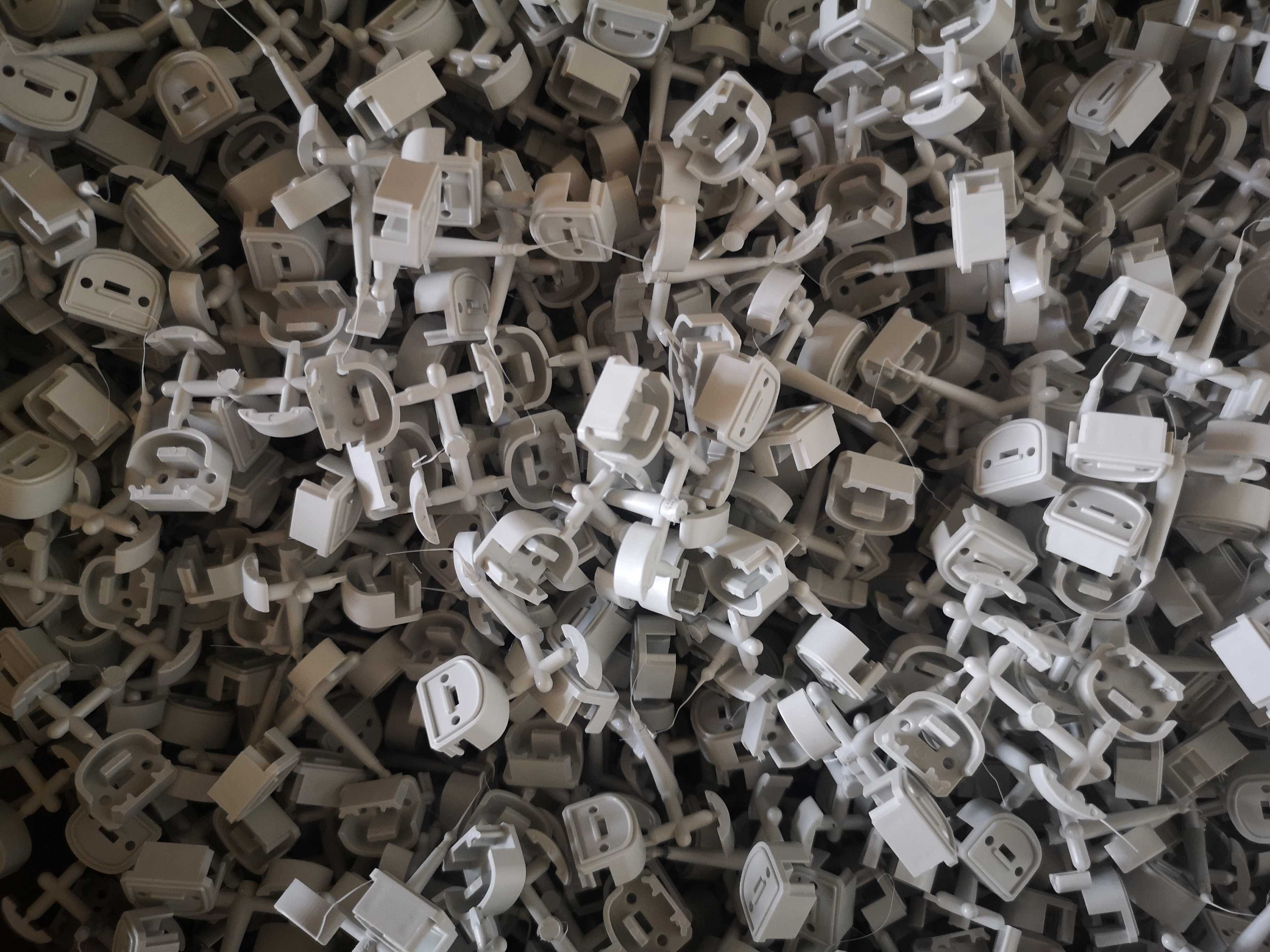Two-shot injection molding is also known as dual-shot, multi-shot, or double molding. It refers to a sub-category of injection molding that facilitates engineers and manufacturers to produce multi-colored and multi-material parts without streamlining any extended assembly steps. Two-shot injection molding is achieved on one machine automated to accomplish two injections in a single cycle. In the process, a nozzle is used to inject plastic into a mold. The mold is then turned, and another plastic material is injected into the mold from a subsequent nozzle. Double molding improves the co-polymerization of soft and hard materials to make a solid molecular bond.
When is Two-Shot Injection Molding Used?
Two-shot injection molding is carried out to manufacture desired plastic parts like multi-colored parts, instrumentation or dashboard, flexible hinges, and other moveable components. Moreover, two-shot injection molding is used for the following reasons:
- Two-shot injection molding is widely used when multi-materials get joined to manufacture multi-component parts in multi-colors.
- Usually, two-shot injection molding comes into play when the design is complex and hard to simulate with the normal injection molding process.
- When high-volume production using multi-materials is required, two-shot injection molding is used. It reduces the need for any extended handling and assembly and hence lowers the manufacturing costs.
- Wastage has never been bearable in production processes. However, adopting two-shot injection molding is one of the leading means of reducing waste since molds align correctly, and the chances for deformation are minimal.
- At the same time, the product obtained due to two-shot injection molding offers enhanced features, quality, aesthetics, ergonomics, and a more comprehensive range of designs.
In Which Industries Is Two-Shot Molding Used?
Two-shot injection molding is hugely used in the aviation industry, automotive industry, medical industry, military, and consumer industry. It can be said that from military tools to baby bottles, the double molding process applies to any industry.
Benefits of Double Molding / Advantages Over Standard Molding
Compared with standard injection molding or other injection molding processes, two-shot injection molding has some essential services that solely belong to it. For example:
1. Part Consolidation
Unlike standard injection molding operation, two-shot injection molding condenses the number of components in a finished assembly. It eliminates an average of $40k in engineering and development, leaving validation costs reduced related to each other part number.
2. Improved Efficiency
With the single tool in-line, two-shot molding allows manufacturers to manufacture multiple components, reduce labor costs, and increase overall process efficiency. After molding, the need for welding parts through other means can also get avoided.
3. Complex Molding
Two-shot injection molding facilitates the creation of complex design molds and products, and multiple materials for required functionalities are added up to obtain the desired outcome.
4. Enhanced Quality
Due to the single tool process, two-shot molding incorporates lower tolerance and higher accuracy and repeatability than other molding processes. Consequently, scrap rates are also lower.
Two-Shot Molding Versus Overmolding
Two-shot molding is a manufacturing process mainstreamed to achieve the product with intricate design and multi colors/materials, significantly in high-volume production cases. The second distinguishing factor is its compliance with the mechanism that utilizes two or more materials to shape a final product. The process can be best explained and understood in terms of diverse colors and multiple materials' layers created by the injection molding machines. In the first step, a substrate is made by injecting the material into the mold. After the substrate is ready, it is sent to the next mold chamber (second-shot), and another material(s) is molded around the substrate, which might be of single or multiple colors.
Conversely, overmolding is a process in which an additional material layer is added to an already existing part or piece. The process is consistently used to produce parts, their sub-sections, and for prototyping. The substrate material is set into the mold, where the following material is injected around the substrate. Then, the two materials become consolidated as a solitary part. Including automotive, medical, and military sectors, overmolding applications are awe-inspiring. A typical example of overmolding is a toothbrush with rubberized grips on the handle and a stiff frame.
Accordingly, two-shot molding and overmolding are two executively similar but still different processes with different applications in diverse fields. Apart from this, to choose one of these two, one had to see the production volume. Overmolding is used for low-volume production, while two-shot molding is suitable for high-volume production. But still, engineers need to carefully analyze and then decide, considering many other factors of their project.
Conclusion
According to the market reports, the global market size of two-shot injection molding was around $7.4 billion in 2020, which is expected to reach $10.7 billion by 2027 with a CAGR of 5.4%. Thus, two-shot molding is a lucrative field with a significant global market size anticipated to grow further. For reducing costs, improve quality, improve efficiency, and consolidate parts, two-shot molding or dual-molding seems, by all accounts, an ideal choice.


